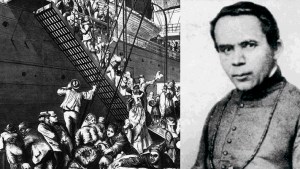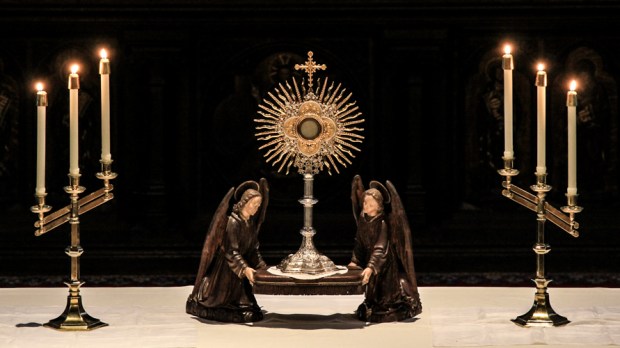Starting around the 16th century, there arose a custom of exposing a consecrated Host on the altar in a monstrance for all to adore for a period of 40 hours. Parishioners would take turns adoring Jesus in the Blessed Sacrament, dividing it up in individual hours. It began as a response to the many sins of the people during the time period and as a way to make reparation for the numerous offenses against God.

Read more:
What is perpetual adoration and why is it deeply personal?
St. Philip Neri introduced the devotion in Rome around 1550 and did all that he could to promote it. St. Ignatius of Loyola also promoted the practice and the Jesuits brought it to Germany. In a letter, Pope Clement VIII encouraged the spread of this devotion, writing: “We have determined to establish publicly in this Mother City of Rome an uninterrupted course of prayer in such ways that in the different churches, on appointed days, there be observed the pious and salutary devotion of the Forty Hours, with such an arrangement of churches and times that at every hour of the day and night, the whole year round the incense of prayer shall ascend without intermission before the face of the Lord.”
The practice spread rapidly and eventually reached the US. Among its chief promoters was St. John Neumann, who struggled with much opposition from both those outside and inside the Church. It took a miraculous event to convince him to start the devotion in his diocese.

Read more:
St. John Neumann: American saint who arrived with $1 in his pocket and one suit of clothes
The event is narrated by Linda O’Brien in an article on Catholic Exchange.com:
One night, he was working very late at his desk and fell asleep in his chair. The candle on the desk burnt down and charred some of the papers, but they were still readable. He awoke, surprised and thankful that a fire had not ignited. He fell on his knees to give thanks to God for protection, and heard His voice saying, “As the flames are burning here without consuming or injuring the writing, so shall I pour out my grace in the Blessed Sacrament without prejudice to my honor. Fear no profanation, therefore; hesitate no longer to carry out your design for my glory.”
The event reassured Neumann and as a result he instituted the 40 Hours Devotion in his diocese and asked that each parish host the practice every year. After the success of St. John Neumann’s, the 40 Hours Devotion became popular and spread to other dioceses in the US. It was formally approved in the US at the Plenary Council of Baltimore in 1866.
The 40 Hours Devotion is an experience centered on exposing parishioners to “face-to-face” time with Jesus, present in the Blessed Sacrament. It is a worthy devotion, one that helps the faithful encounter the Risen Lord in a personal way, nurturing their relationship with him. As St. Alphonsus Liguori once wrote: “Of all devotions, that of adoring Jesus in the Blessed Sacrament is the greatest after the sacraments, the one dearest to God and the one most helpful to us.”

Read more:
Have you ever heard of the “butterfly effect” of Eucharistic adoration?

